- Clone
- MRG2b-85 (See other available formats)
- Regulatory Status
- RUO
- Other Names
- Immunoglobulin G2b
- Isotype
- Mouse IgG1, κ
- Ave. Rating
- Submit a Review
- Product Citations
- publications
| Cat # | Size | Price | Quantity Check Availability | Save | ||
|---|---|---|---|---|---|---|
| 408202 | 500 µg | 171 CHF | ||||
The MRG2b-85 monoclonal antibody reacts with rat immunoglobulin G2b (IgG2b) in all tested rat strains (Lou, Lou/Ws1/M, Lewis, Wistar, DA, Sprague-Dawley). The MRG2b-85 monoclonal antibody may be used as primary or secondary reagent for ELISA or immunofluorescent analysis.
Product DetailsProduct Details
- Verified Reactivity
- Rat
- Antibody Type
- Monoclonal
- Host Species
- Mouse
- Immunogen
- mixed rat Igs
- Formulation
- Phosphate-buffered solution, pH 7.2, containing 0.09% sodium azide.
- Preparation
- The antibody was purified by affinity chromatography.
- Concentration
- 0.5 mg/ml
- Storage & Handling
- The antibody solution should be stored undiluted between 2°C and 8°C.
- Application
-
ELISA, FC
- Recommended Usage
-
Each lot of this antibody is quality control tested by ELISA. For ELISA capture, the suggested use of this reagent is ≤ 5.0 µg per ml. It's recommended that the reagent be titrated for optimal performance for each application.
- Product Citations
-
- RRID
-
AB_492998 (BioLegend Cat. No. 408202)
Antigen Details
- Gene ID
- NA
- UniProt
- View information about IgG2b on UniProt.org
Related FAQs
Other Formats
View All IgG2b Reagents Request Custom Conjugation| Description | Clone | Applications |
|---|---|---|
| Purified anti-rat IgG2b | MRG2b-85 | ELISA,FC |
| Biotin anti-rat IgG2b | MRG2b-85 | ELISA,FC |
| FITC anti-rat IgG2b | MRG2b-85 | FC |
| Alexa Fluor® 594 anti-rat IgG2b | MRG2b-85 | IHC-F,ICC |
| Alexa Fluor® 488 anti-rat IgG2b | MRG2b-85 | FC,IHC-F |
| Alexa Fluor® 647 anti-rat IgG2b | MRG2b-85 | IHC-F,ICC |
| PE anti-rat IgG2b | MRG2b-85 | FC |
Compare Data Across All Formats
This data display is provided for general comparisons between formats.
Your actual data may vary due to variations in samples, target cells, instruments and their settings, staining conditions, and other factors.
If you need assistance with selecting the best format contact our expert technical support team.
-
Purified anti-rat IgG2b
-
Biotin anti-rat IgG2b
-
FITC anti-rat IgG2b
-
Alexa Fluor® 594 anti-rat IgG2b
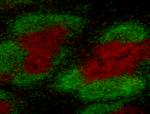
C57BL/6 mouse frozen spleen section was fixed with 4% parafo... 
HeLa cells were fixed with 4% paraformaldehyde for 10 minute... -
Alexa Fluor® 488 anti-rat IgG2b
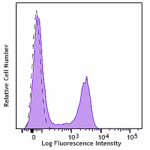
C57BL/6 mouse splenocytes were stained with purified CD3 (cl... 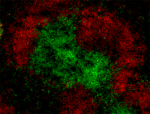
C57BL/6 mouse frozen spleen section was fixed with 4% parafo... -
Alexa Fluor® 647 anti-rat IgG2b
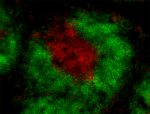
C57BL/6 mouse frozen spleen section was fixed with 4% parafo... 
HeLa cells were fixed with 4% paraformaldehyde for 10 minute... -
PE anti-rat IgG2b
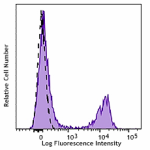
C57BL/6 splenocytes stained with purified anti-mouse CD3 (cl...
 Login / Register
Login / Register 







Follow Us